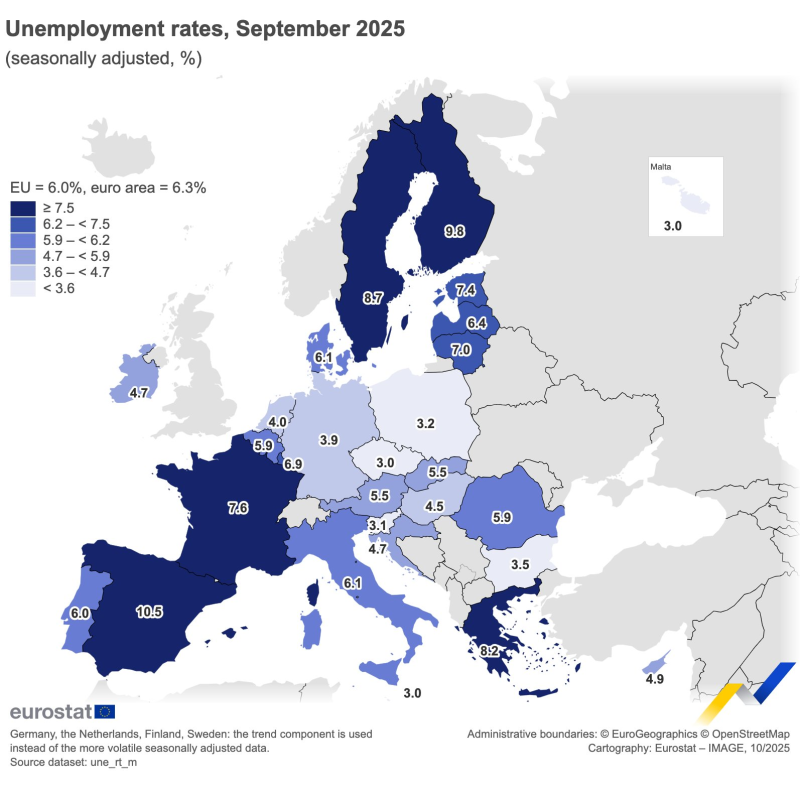● According to EU_Eurostat, the European Union's unemployment rate was 6.0% in September 2025, while the euro area held at 6.3%. These seasonally adjusted numbers show the labor market staying stable even as the region deals with inflation and slower economic growth.

● The main challenge now is keeping jobs stable while managing wage increases and government spending. As countries pull back on pandemic relief and energy subsidies, tighter budgets could hurt weaker economies—potentially leading to more small business failures and widening the employment gap between northern and southern Europe. Spain (10.5%) and France (7.6%) still have notably higher unemployment, while Germany (3.9%), Poland (3.0%), and Czechia (3.1%) are at historic lows.

● This uneven recovery is creating real financial effects. Strong employment in central and eastern Europe has kept tax revenues and consumer spending healthy, balancing out slower factory output in northern countries like Sweden (9.8%) and Finland (8.7%). Policymakers are now looking at options like adjusting corporate taxes and making it easier for workers to move across borders to reduce these regional gaps.
● Overall, these numbers show the EU labor market is resilient during a time of weaker GDP growth and high interest rates. Southern Europe has avoided major setbacks thanks to tourism and services bouncing back, while eastern member states keep attracting manufacturing investments. The 6.0% unemployment rate is near a 20-year low, proving that labor reforms and digital transformation are helping offset the impact of expensive borrowing.
 Usman Salis
Usman Salis

 Usman Salis
Usman Salis


